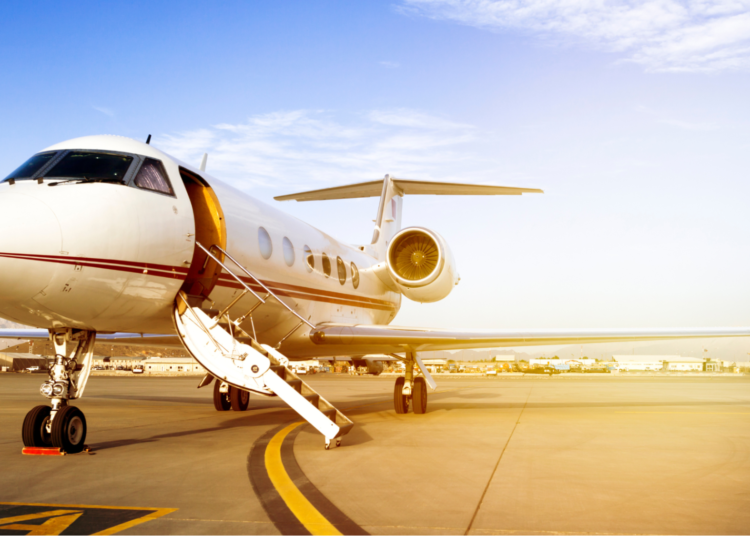Luxurious within the sky is constructed on self-discipline on the bottom. The expertise of getting into a personal jet – with its plush leather-based seats, whisper-quiet cabin, and uninterrupted Wi-Fi – depends on layers of behind-the-scenes engineering and rigorous maintenance. On the heart of this course of is plane upkeep, the often-unseen cornerstone of security, reliability, and efficiency in personal aviation.
Plane upkeep is greater than oil adjustments and engine checks. It’s a advanced, high-stakes system of inspections, preventative care, and regulatory compliance that ensures a personal jet stays airworthy, luxurious, and totally optimized for each mission. And in a world the place passengers count on nothing lower than perfection, upkeep isn’t only a field to test – it’s the assure behind each flawless takeoff.
What Plane Upkeep Actually Means
Within the personal jet business, upkeep encompasses all technical, regulatory, and beauty efforts required to maintain an plane airworthy and mission-ready. This consists of:
- Scheduled Upkeep: Predetermined inspections and duties based mostly on hours flown or calendar dates.
- Unscheduled Upkeep: Reactive repairs, usually resulting from part failure, climate injury, or put on and tear.
- Preventive and Predictive Upkeep: Anticipating points earlier than they come up utilizing digital techniques, sensors, and engineering foresight.
A personal jet isn’t just an plane – it’s a dynamic, regulated machine that should meet stringent efficiency and security standards each time it flies. Each element issues, from hydraulic strain readings to the stitching on cabin upholstery.
Key Upkeep Intervals and Milestones
Similar to luxurious vehicles, personal jets observe strict service schedules – however with way more complexity. Upkeep intervals are often outlined by plane producers, regulatory our bodies, or insurance coverage necessities. These fall into two major classes:
- Calendar-Primarily based Checks: Carried out at mounted intervals no matter utilization – month-to-month, quarterly, yearly.
- Flight-Hour-Primarily based Checks: Triggered by gathered engine hours or flight cycles.
Gentle jets might bear minor checks each 100-200 hours, whereas bigger jets have scheduled deep inspections at 1,000-hour, 3,000-hour, or 5,000-hour milestones. These are the enterprise jet business’s equal of the airline world’s A, B, C, and D checks – tailored for personal utilization patterns.
These inspections take a look at all crucial techniques: airframe construction, touchdown gear, avionics, communication techniques, gas tanks, brakes, tires, and environmental management techniques. Engines are particularly important, requiring borescope inspections and periodic overhauls to retain certification.
Contained in the Hangar – Who’s Behind the Work
Retaining a jet in high situation isn’t a solo job – it’s the results of coordinated effort amongst licensed professionals. Plane upkeep engineers (AMEs), A&P (Airframe and Powerplant) mechanics, avionics specialists, and high quality assurance inspectors all play key roles.
Many jets are serviced by factory-authorized MROs (Upkeep, Restore, and Overhaul facilities) focusing on specific manufacturers. A Gulfstream G650, for instance, might solely be serviced at facilities accredited by Gulfstream Aerospace, utilizing proprietary instruments and licensed elements.
These groups handle all the pieces from fluid strain readings and wing inspections to inflight leisure calibration. Some even preserve beauty elements like seat reupholstering and veneer sprucing to make sure the posh expertise stays intact.
Instruments and Expertise in Fashionable Upkeep
Plane upkeep is more and more tech-driven. Fashionable jets are geared up with sensors that observe part efficiency and report anomalies in real-time. Upkeep monitoring software program like CAMP, Hall, or Flightdocs helps operators monitor due objects, log information, and schedule inspections.
AI-based diagnostics are beginning to predict half failures earlier than they occur. This not solely enhances security but additionally helps keep away from expensive unscheduled downtime.
When a mechanical concern arises mid-trip, cell service groups are dispatched for AOG (Plane on Floor) situations. These groups can exchange elements, troubleshoot techniques, or clear faults inside hours – preserving delays to a minimal and reputations intact.
Balancing Luxurious and Performance
Not like business plane, personal jets are as a lot about aesthetics as aerodynamics. The interiors of those plane usually characteristic bespoke supplies like Italian leather-based, high-gloss wooden veneers, marble counter tops, and designer lighting techniques. However these parts should endure the pressures of flight: adjustments in cabin strain, vibrations, temperature shifts, and heavy utilization.
Upkeep groups examine not solely technical techniques but additionally cabin finishes. For instance:
- Wooden trim should be inspected for delamination or cracking.
- Leather-based upholstery wants conditioning and typically rewrapping.
- Cabin Wi-Fi and leisure techniques should be up to date and examined.
- Environmental techniques like air circulation and temperature controls should be calibrated for optimum consolation.
Guaranteeing that luxurious meets sturdiness requires specialist consideration. Upkeep groups should know how one can preserve uncommon supplies with out compromising FAA or EASA requirements.
Regulatory Oversight and Certification
Personal aviation is tightly regulated, and upkeep is on the coronary heart of compliance. Plane registered within the U.S. fall underneath FAA jurisdiction, whereas European jets reply to EASA. Many international locations even have their very own civil aviation authorities with equal requirements.
To stay compliant, operators should:
- Sustain-to-date logbooks and repair information.
- Conduct obligatory inspections and half replacements.
- Adjust to Airworthiness Directives (ADs) and Service Bulletins (SBs).
- Guarantee all upkeep is carried out by licensed personnel.
Failure to fulfill these requirements can lead to penalties, grounding of the plane, or lack of insurance coverage protection. That’s why most house owners depend on administration firms or MRO companions to deal with the paperwork and plan inspections properly upfront.
Value, Downtime, and Strategic Planning
Upkeep is a good portion of a personal jet’s lifecycle price. Relying on plane dimension and mission profile, annual upkeep bills can vary from $200,000 to over $1 million. This consists of scheduled inspections, elements alternative, crew coaching, hangar storage, and assist providers.
To handle these prices, good house owners depend on skilled plane administration companies that forecast upcoming upkeep wants, negotiate with service suppliers, and bundle providers for higher charges. Upkeep planning additionally ensures that plane are solely offline throughout low-usage home windows.
A well-maintained jet not solely retains its worth but additionally avoids sudden AOG occasions that disrupt schedules and consumer expectations. Downtime is minimized when inspections are pre-planned and elements are pre-ordered.
Luxurious within the sky is constructed on self-discipline on the bottom. The expertise of getting into a personal jet – with its plush leather-based seats, whisper-quiet cabin, and uninterrupted Wi-Fi – depends on layers of behind-the-scenes engineering and rigorous maintenance. On the heart of this course of is plane upkeep, the often-unseen cornerstone of security, reliability, and efficiency in personal aviation.
Plane upkeep is greater than oil adjustments and engine checks. It’s a advanced, high-stakes system of inspections, preventative care, and regulatory compliance that ensures a personal jet stays airworthy, luxurious, and totally optimized for each mission. And in a world the place passengers count on nothing lower than perfection, upkeep isn’t only a field to test – it’s the assure behind each flawless takeoff.
What Plane Upkeep Actually Means
Within the personal jet business, upkeep encompasses all technical, regulatory, and beauty efforts required to maintain an plane airworthy and mission-ready. This consists of:
- Scheduled Upkeep: Predetermined inspections and duties based mostly on hours flown or calendar dates.
- Unscheduled Upkeep: Reactive repairs, usually resulting from part failure, climate injury, or put on and tear.
- Preventive and Predictive Upkeep: Anticipating points earlier than they come up utilizing digital techniques, sensors, and engineering foresight.
A personal jet isn’t just an plane – it’s a dynamic, regulated machine that should meet stringent efficiency and security standards each time it flies. Each element issues, from hydraulic strain readings to the stitching on cabin upholstery.
Key Upkeep Intervals and Milestones
Similar to luxurious vehicles, personal jets observe strict service schedules – however with way more complexity. Upkeep intervals are often outlined by plane producers, regulatory our bodies, or insurance coverage necessities. These fall into two major classes:
- Calendar-Primarily based Checks: Carried out at mounted intervals no matter utilization – month-to-month, quarterly, yearly.
- Flight-Hour-Primarily based Checks: Triggered by gathered engine hours or flight cycles.
Gentle jets might bear minor checks each 100-200 hours, whereas bigger jets have scheduled deep inspections at 1,000-hour, 3,000-hour, or 5,000-hour milestones. These are the enterprise jet business’s equal of the airline world’s A, B, C, and D checks – tailored for personal utilization patterns.
These inspections take a look at all crucial techniques: airframe construction, touchdown gear, avionics, communication techniques, gas tanks, brakes, tires, and environmental management techniques. Engines are particularly important, requiring borescope inspections and periodic overhauls to retain certification.
Contained in the Hangar – Who’s Behind the Work
Retaining a jet in high situation isn’t a solo job – it’s the results of coordinated effort amongst licensed professionals. Plane upkeep engineers (AMEs), A&P (Airframe and Powerplant) mechanics, avionics specialists, and high quality assurance inspectors all play key roles.
Many jets are serviced by factory-authorized MROs (Upkeep, Restore, and Overhaul facilities) focusing on specific manufacturers. A Gulfstream G650, for instance, might solely be serviced at facilities accredited by Gulfstream Aerospace, utilizing proprietary instruments and licensed elements.
These groups handle all the pieces from fluid strain readings and wing inspections to inflight leisure calibration. Some even preserve beauty elements like seat reupholstering and veneer sprucing to make sure the posh expertise stays intact.
Instruments and Expertise in Fashionable Upkeep
Plane upkeep is more and more tech-driven. Fashionable jets are geared up with sensors that observe part efficiency and report anomalies in real-time. Upkeep monitoring software program like CAMP, Hall, or Flightdocs helps operators monitor due objects, log information, and schedule inspections.
AI-based diagnostics are beginning to predict half failures earlier than they occur. This not solely enhances security but additionally helps keep away from expensive unscheduled downtime.
When a mechanical concern arises mid-trip, cell service groups are dispatched for AOG (Plane on Floor) situations. These groups can exchange elements, troubleshoot techniques, or clear faults inside hours – preserving delays to a minimal and reputations intact.
Balancing Luxurious and Performance
Not like business plane, personal jets are as a lot about aesthetics as aerodynamics. The interiors of those plane usually characteristic bespoke supplies like Italian leather-based, high-gloss wooden veneers, marble counter tops, and designer lighting techniques. However these parts should endure the pressures of flight: adjustments in cabin strain, vibrations, temperature shifts, and heavy utilization.
Upkeep groups examine not solely technical techniques but additionally cabin finishes. For instance:
- Wooden trim should be inspected for delamination or cracking.
- Leather-based upholstery wants conditioning and typically rewrapping.
- Cabin Wi-Fi and leisure techniques should be up to date and examined.
- Environmental techniques like air circulation and temperature controls should be calibrated for optimum consolation.
Guaranteeing that luxurious meets sturdiness requires specialist consideration. Upkeep groups should know how one can preserve uncommon supplies with out compromising FAA or EASA requirements.
Regulatory Oversight and Certification
Personal aviation is tightly regulated, and upkeep is on the coronary heart of compliance. Plane registered within the U.S. fall underneath FAA jurisdiction, whereas European jets reply to EASA. Many international locations even have their very own civil aviation authorities with equal requirements.
To stay compliant, operators should:
- Sustain-to-date logbooks and repair information.
- Conduct obligatory inspections and half replacements.
- Adjust to Airworthiness Directives (ADs) and Service Bulletins (SBs).
- Guarantee all upkeep is carried out by licensed personnel.
Failure to fulfill these requirements can lead to penalties, grounding of the plane, or lack of insurance coverage protection. That’s why most house owners depend on administration firms or MRO companions to deal with the paperwork and plan inspections properly upfront.
Value, Downtime, and Strategic Planning
Upkeep is a good portion of a personal jet’s lifecycle price. Relying on plane dimension and mission profile, annual upkeep bills can vary from $200,000 to over $1 million. This consists of scheduled inspections, elements alternative, crew coaching, hangar storage, and assist providers.
To handle these prices, good house owners depend on skilled plane administration companies that forecast upcoming upkeep wants, negotiate with service suppliers, and bundle providers for higher charges. Upkeep planning additionally ensures that plane are solely offline throughout low-usage home windows.
A well-maintained jet not solely retains its worth but additionally avoids sudden AOG occasions that disrupt schedules and consumer expectations. Downtime is minimized when inspections are pre-planned and elements are pre-ordered.
Luxurious within the sky is constructed on self-discipline on the bottom. The expertise of getting into a personal jet – with its plush leather-based seats, whisper-quiet cabin, and uninterrupted Wi-Fi – depends on layers of behind-the-scenes engineering and rigorous maintenance. On the heart of this course of is plane upkeep, the often-unseen cornerstone of security, reliability, and efficiency in personal aviation.
Plane upkeep is greater than oil adjustments and engine checks. It’s a advanced, high-stakes system of inspections, preventative care, and regulatory compliance that ensures a personal jet stays airworthy, luxurious, and totally optimized for each mission. And in a world the place passengers count on nothing lower than perfection, upkeep isn’t only a field to test – it’s the assure behind each flawless takeoff.
What Plane Upkeep Actually Means
Within the personal jet business, upkeep encompasses all technical, regulatory, and beauty efforts required to maintain an plane airworthy and mission-ready. This consists of:
- Scheduled Upkeep: Predetermined inspections and duties based mostly on hours flown or calendar dates.
- Unscheduled Upkeep: Reactive repairs, usually resulting from part failure, climate injury, or put on and tear.
- Preventive and Predictive Upkeep: Anticipating points earlier than they come up utilizing digital techniques, sensors, and engineering foresight.
A personal jet isn’t just an plane – it’s a dynamic, regulated machine that should meet stringent efficiency and security standards each time it flies. Each element issues, from hydraulic strain readings to the stitching on cabin upholstery.
Key Upkeep Intervals and Milestones
Similar to luxurious vehicles, personal jets observe strict service schedules – however with way more complexity. Upkeep intervals are often outlined by plane producers, regulatory our bodies, or insurance coverage necessities. These fall into two major classes:
- Calendar-Primarily based Checks: Carried out at mounted intervals no matter utilization – month-to-month, quarterly, yearly.
- Flight-Hour-Primarily based Checks: Triggered by gathered engine hours or flight cycles.
Gentle jets might bear minor checks each 100-200 hours, whereas bigger jets have scheduled deep inspections at 1,000-hour, 3,000-hour, or 5,000-hour milestones. These are the enterprise jet business’s equal of the airline world’s A, B, C, and D checks – tailored for personal utilization patterns.
These inspections take a look at all crucial techniques: airframe construction, touchdown gear, avionics, communication techniques, gas tanks, brakes, tires, and environmental management techniques. Engines are particularly important, requiring borescope inspections and periodic overhauls to retain certification.
Contained in the Hangar – Who’s Behind the Work
Retaining a jet in high situation isn’t a solo job – it’s the results of coordinated effort amongst licensed professionals. Plane upkeep engineers (AMEs), A&P (Airframe and Powerplant) mechanics, avionics specialists, and high quality assurance inspectors all play key roles.
Many jets are serviced by factory-authorized MROs (Upkeep, Restore, and Overhaul facilities) focusing on specific manufacturers. A Gulfstream G650, for instance, might solely be serviced at facilities accredited by Gulfstream Aerospace, utilizing proprietary instruments and licensed elements.
These groups handle all the pieces from fluid strain readings and wing inspections to inflight leisure calibration. Some even preserve beauty elements like seat reupholstering and veneer sprucing to make sure the posh expertise stays intact.
Instruments and Expertise in Fashionable Upkeep
Plane upkeep is more and more tech-driven. Fashionable jets are geared up with sensors that observe part efficiency and report anomalies in real-time. Upkeep monitoring software program like CAMP, Hall, or Flightdocs helps operators monitor due objects, log information, and schedule inspections.
AI-based diagnostics are beginning to predict half failures earlier than they occur. This not solely enhances security but additionally helps keep away from expensive unscheduled downtime.
When a mechanical concern arises mid-trip, cell service groups are dispatched for AOG (Plane on Floor) situations. These groups can exchange elements, troubleshoot techniques, or clear faults inside hours – preserving delays to a minimal and reputations intact.
Balancing Luxurious and Performance
Not like business plane, personal jets are as a lot about aesthetics as aerodynamics. The interiors of those plane usually characteristic bespoke supplies like Italian leather-based, high-gloss wooden veneers, marble counter tops, and designer lighting techniques. However these parts should endure the pressures of flight: adjustments in cabin strain, vibrations, temperature shifts, and heavy utilization.
Upkeep groups examine not solely technical techniques but additionally cabin finishes. For instance:
- Wooden trim should be inspected for delamination or cracking.
- Leather-based upholstery wants conditioning and typically rewrapping.
- Cabin Wi-Fi and leisure techniques should be up to date and examined.
- Environmental techniques like air circulation and temperature controls should be calibrated for optimum consolation.
Guaranteeing that luxurious meets sturdiness requires specialist consideration. Upkeep groups should know how one can preserve uncommon supplies with out compromising FAA or EASA requirements.
Regulatory Oversight and Certification
Personal aviation is tightly regulated, and upkeep is on the coronary heart of compliance. Plane registered within the U.S. fall underneath FAA jurisdiction, whereas European jets reply to EASA. Many international locations even have their very own civil aviation authorities with equal requirements.
To stay compliant, operators should:
- Sustain-to-date logbooks and repair information.
- Conduct obligatory inspections and half replacements.
- Adjust to Airworthiness Directives (ADs) and Service Bulletins (SBs).
- Guarantee all upkeep is carried out by licensed personnel.
Failure to fulfill these requirements can lead to penalties, grounding of the plane, or lack of insurance coverage protection. That’s why most house owners depend on administration firms or MRO companions to deal with the paperwork and plan inspections properly upfront.
Value, Downtime, and Strategic Planning
Upkeep is a good portion of a personal jet’s lifecycle price. Relying on plane dimension and mission profile, annual upkeep bills can vary from $200,000 to over $1 million. This consists of scheduled inspections, elements alternative, crew coaching, hangar storage, and assist providers.
To handle these prices, good house owners depend on skilled plane administration companies that forecast upcoming upkeep wants, negotiate with service suppliers, and bundle providers for higher charges. Upkeep planning additionally ensures that plane are solely offline throughout low-usage home windows.
A well-maintained jet not solely retains its worth but additionally avoids sudden AOG occasions that disrupt schedules and consumer expectations. Downtime is minimized when inspections are pre-planned and elements are pre-ordered.
Luxurious within the sky is constructed on self-discipline on the bottom. The expertise of getting into a personal jet – with its plush leather-based seats, whisper-quiet cabin, and uninterrupted Wi-Fi – depends on layers of behind-the-scenes engineering and rigorous maintenance. On the heart of this course of is plane upkeep, the often-unseen cornerstone of security, reliability, and efficiency in personal aviation.
Plane upkeep is greater than oil adjustments and engine checks. It’s a advanced, high-stakes system of inspections, preventative care, and regulatory compliance that ensures a personal jet stays airworthy, luxurious, and totally optimized for each mission. And in a world the place passengers count on nothing lower than perfection, upkeep isn’t only a field to test – it’s the assure behind each flawless takeoff.
What Plane Upkeep Actually Means
Within the personal jet business, upkeep encompasses all technical, regulatory, and beauty efforts required to maintain an plane airworthy and mission-ready. This consists of:
- Scheduled Upkeep: Predetermined inspections and duties based mostly on hours flown or calendar dates.
- Unscheduled Upkeep: Reactive repairs, usually resulting from part failure, climate injury, or put on and tear.
- Preventive and Predictive Upkeep: Anticipating points earlier than they come up utilizing digital techniques, sensors, and engineering foresight.
A personal jet isn’t just an plane – it’s a dynamic, regulated machine that should meet stringent efficiency and security standards each time it flies. Each element issues, from hydraulic strain readings to the stitching on cabin upholstery.
Key Upkeep Intervals and Milestones
Similar to luxurious vehicles, personal jets observe strict service schedules – however with way more complexity. Upkeep intervals are often outlined by plane producers, regulatory our bodies, or insurance coverage necessities. These fall into two major classes:
- Calendar-Primarily based Checks: Carried out at mounted intervals no matter utilization – month-to-month, quarterly, yearly.
- Flight-Hour-Primarily based Checks: Triggered by gathered engine hours or flight cycles.
Gentle jets might bear minor checks each 100-200 hours, whereas bigger jets have scheduled deep inspections at 1,000-hour, 3,000-hour, or 5,000-hour milestones. These are the enterprise jet business’s equal of the airline world’s A, B, C, and D checks – tailored for personal utilization patterns.
These inspections take a look at all crucial techniques: airframe construction, touchdown gear, avionics, communication techniques, gas tanks, brakes, tires, and environmental management techniques. Engines are particularly important, requiring borescope inspections and periodic overhauls to retain certification.
Contained in the Hangar – Who’s Behind the Work
Retaining a jet in high situation isn’t a solo job – it’s the results of coordinated effort amongst licensed professionals. Plane upkeep engineers (AMEs), A&P (Airframe and Powerplant) mechanics, avionics specialists, and high quality assurance inspectors all play key roles.
Many jets are serviced by factory-authorized MROs (Upkeep, Restore, and Overhaul facilities) focusing on specific manufacturers. A Gulfstream G650, for instance, might solely be serviced at facilities accredited by Gulfstream Aerospace, utilizing proprietary instruments and licensed elements.
These groups handle all the pieces from fluid strain readings and wing inspections to inflight leisure calibration. Some even preserve beauty elements like seat reupholstering and veneer sprucing to make sure the posh expertise stays intact.
Instruments and Expertise in Fashionable Upkeep
Plane upkeep is more and more tech-driven. Fashionable jets are geared up with sensors that observe part efficiency and report anomalies in real-time. Upkeep monitoring software program like CAMP, Hall, or Flightdocs helps operators monitor due objects, log information, and schedule inspections.
AI-based diagnostics are beginning to predict half failures earlier than they occur. This not solely enhances security but additionally helps keep away from expensive unscheduled downtime.
When a mechanical concern arises mid-trip, cell service groups are dispatched for AOG (Plane on Floor) situations. These groups can exchange elements, troubleshoot techniques, or clear faults inside hours – preserving delays to a minimal and reputations intact.
Balancing Luxurious and Performance
Not like business plane, personal jets are as a lot about aesthetics as aerodynamics. The interiors of those plane usually characteristic bespoke supplies like Italian leather-based, high-gloss wooden veneers, marble counter tops, and designer lighting techniques. However these parts should endure the pressures of flight: adjustments in cabin strain, vibrations, temperature shifts, and heavy utilization.
Upkeep groups examine not solely technical techniques but additionally cabin finishes. For instance:
- Wooden trim should be inspected for delamination or cracking.
- Leather-based upholstery wants conditioning and typically rewrapping.
- Cabin Wi-Fi and leisure techniques should be up to date and examined.
- Environmental techniques like air circulation and temperature controls should be calibrated for optimum consolation.
Guaranteeing that luxurious meets sturdiness requires specialist consideration. Upkeep groups should know how one can preserve uncommon supplies with out compromising FAA or EASA requirements.
Regulatory Oversight and Certification
Personal aviation is tightly regulated, and upkeep is on the coronary heart of compliance. Plane registered within the U.S. fall underneath FAA jurisdiction, whereas European jets reply to EASA. Many international locations even have their very own civil aviation authorities with equal requirements.
To stay compliant, operators should:
- Sustain-to-date logbooks and repair information.
- Conduct obligatory inspections and half replacements.
- Adjust to Airworthiness Directives (ADs) and Service Bulletins (SBs).
- Guarantee all upkeep is carried out by licensed personnel.
Failure to fulfill these requirements can lead to penalties, grounding of the plane, or lack of insurance coverage protection. That’s why most house owners depend on administration firms or MRO companions to deal with the paperwork and plan inspections properly upfront.
Value, Downtime, and Strategic Planning
Upkeep is a good portion of a personal jet’s lifecycle price. Relying on plane dimension and mission profile, annual upkeep bills can vary from $200,000 to over $1 million. This consists of scheduled inspections, elements alternative, crew coaching, hangar storage, and assist providers.
To handle these prices, good house owners depend on skilled plane administration companies that forecast upcoming upkeep wants, negotiate with service suppliers, and bundle providers for higher charges. Upkeep planning additionally ensures that plane are solely offline throughout low-usage home windows.
A well-maintained jet not solely retains its worth but additionally avoids sudden AOG occasions that disrupt schedules and consumer expectations. Downtime is minimized when inspections are pre-planned and elements are pre-ordered.













